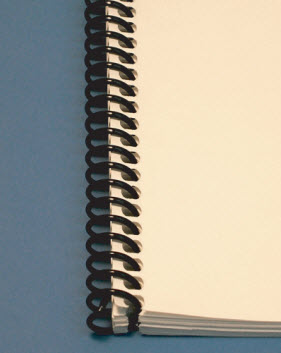Avoid Punching Half Holes
Half-holes occur when the bind-edge of a book is punched and the length of the book does not match the punch’s spacing. For any punch, the space between the foot of the book and the first hole must match the space that is between each of the holes for that punch. The punch cannot be spaced to adjust to the bind-edge length; instead, a hole must be removed and the remaining holes centered, causing a difficult and inefficient entry for the binding.
A half-hole ruins the aesthetic of the book, the binding often catches, and the irregularity requires that the job cannot bind on our automated line. The preferred alternative would be to solve the problem on from the beginning. Therefore:
- Binding Edge will not allow a project to run that will result in half-holes. Instead, we always clearly indicate the final trim size on our quotation, and take time to review the project on the front-end, in order to recommend trim size adjustments before going to press.
- If a problem with half-holes is detected, we will recommend a lengthening or shortening of the final dimensions in order to ensure a clean punch; and therefore, an efficient and economic project run. Normally, to resolve length discrepancies, we asked for an adjustment of 1/16″ to 1/8″ longer or shorter.
- Binding edge is able to adjust the trim size on folded signatures or press sheets, and we can re-trim sheets if necessary. For example, if a book is 8-1/2″ x 11″ long, Binding Edge would request the final length be either 11-1/16″ or 10-7/8″ to avoid half-holes at the foot of the bind-edge.

